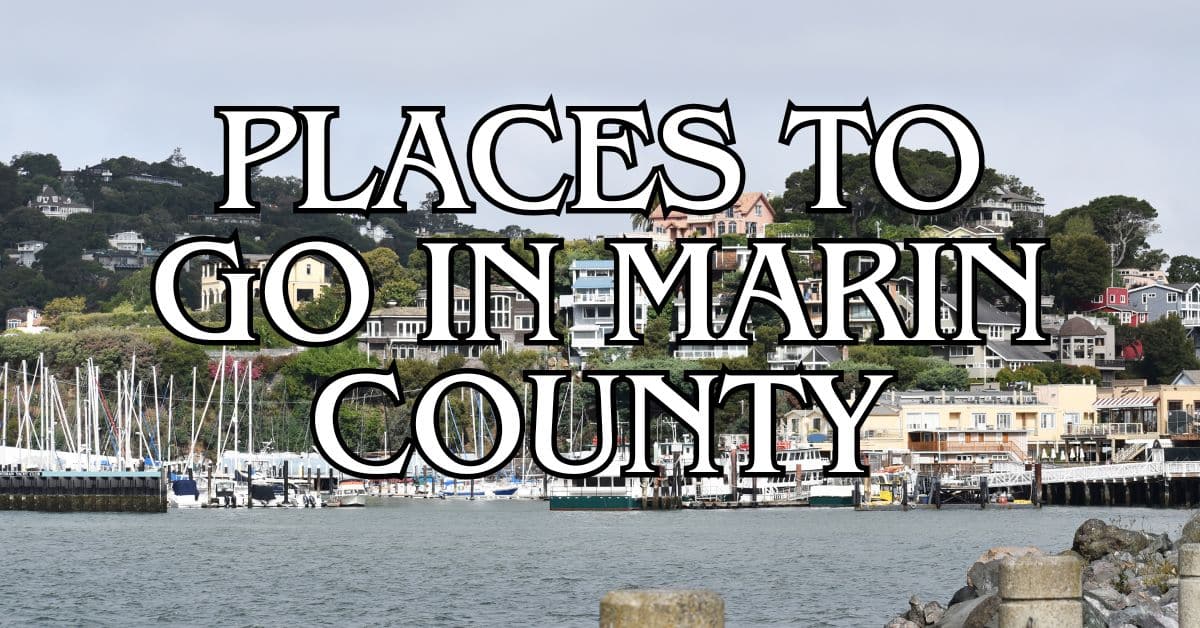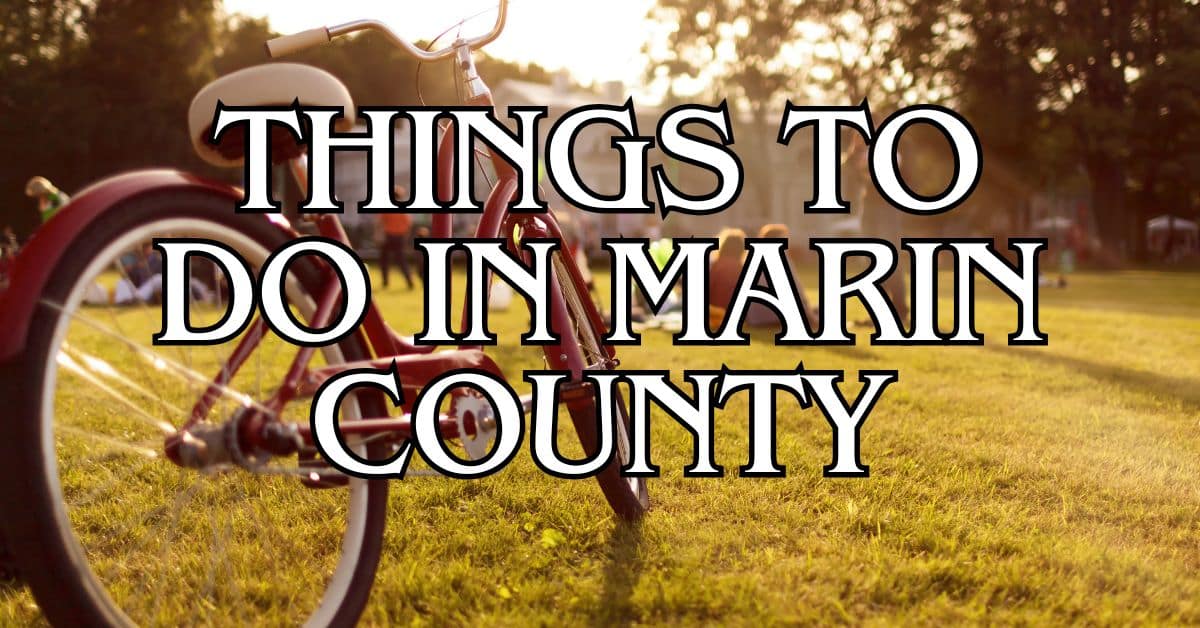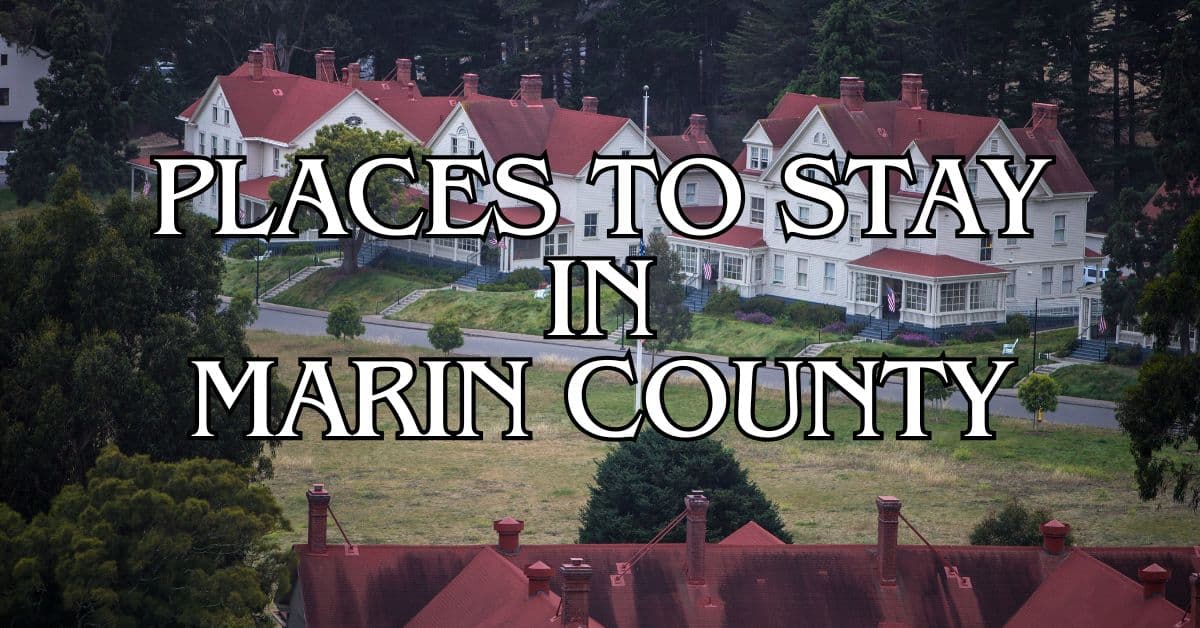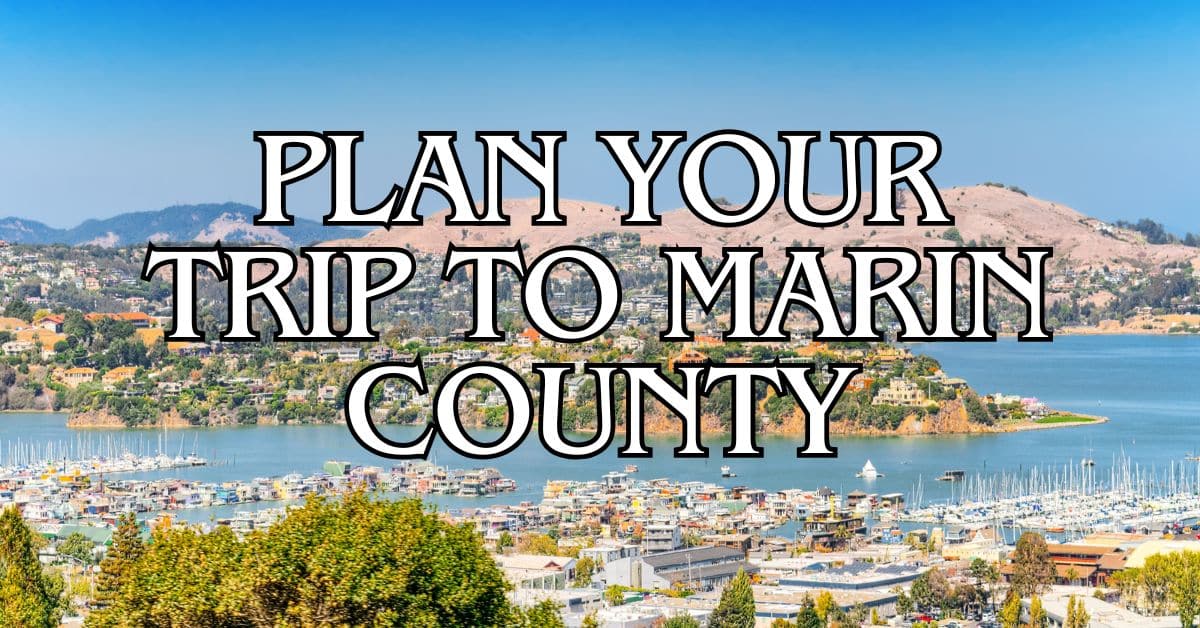The Golden Gate Bridge is San Francisco’s most famous sight, drawing travelers from everywhere. You can experience this engineering marvel in all sorts of ways—walk it, bike it, drive across, or just take in the view from a dozen different spots around the bay. Its bold orange-red color pops against the blue water and fog, making it a can’t-miss photo op.
Getting to the bridge is pretty easy. If you’re driving from San Francisco, head north on Highway 101 and take the Vista Point exit after you cross. No car? No problem—bus tours can get you there, and you’ll probably hear some fun facts along the way. Walking or biking the 1.7-mile span is a favorite for many, and honestly, it’s the best way to soak it all in.
Discover hand-picked hotels and vacation homes tailored for every traveler. Skip booking fees and secure your dream stay today with real-time availability!
Browse Accommodations Now
Your experience changes depending on when you go. Morning fog sometimes shrouds the towers, giving everything a mysterious vibe. Afternoons, if they’re clear, show off the city skyline, Alcatraz, and the Pacific. No two visits feel quite the same—San Francisco’s mood shifts with the weather.

Essential Information for Visiting the Golden Gate Bridge
Before you go, it helps to know the best times to visit, what the weather’s like, and what costs to expect. A little planning goes a long way toward a smooth trip.
Best Times to Visit
If you want to avoid crowds, shoot for weekday mornings—Tuesday through Thursday, 9-11am is usually quietest. Steer clear of holiday weekends and summer Saturdays; parking is a headache and the crowds can be intense.
Love photography? Early mornings (sunrise-ish) have the best light and sometimes clearer skies. Late afternoons can be gorgeous too, but summer fog rolls in pretty reliably.
During peak tourist months (June-August), try to arrive before 9am or after 4pm. September and October are sleeper hits: clearer views, less fog, and milder weather.
If you’re driving southbound into San Francisco on a weekday morning, expect traffic. Commuters slow things down a lot.
Weather and Fog Conditions
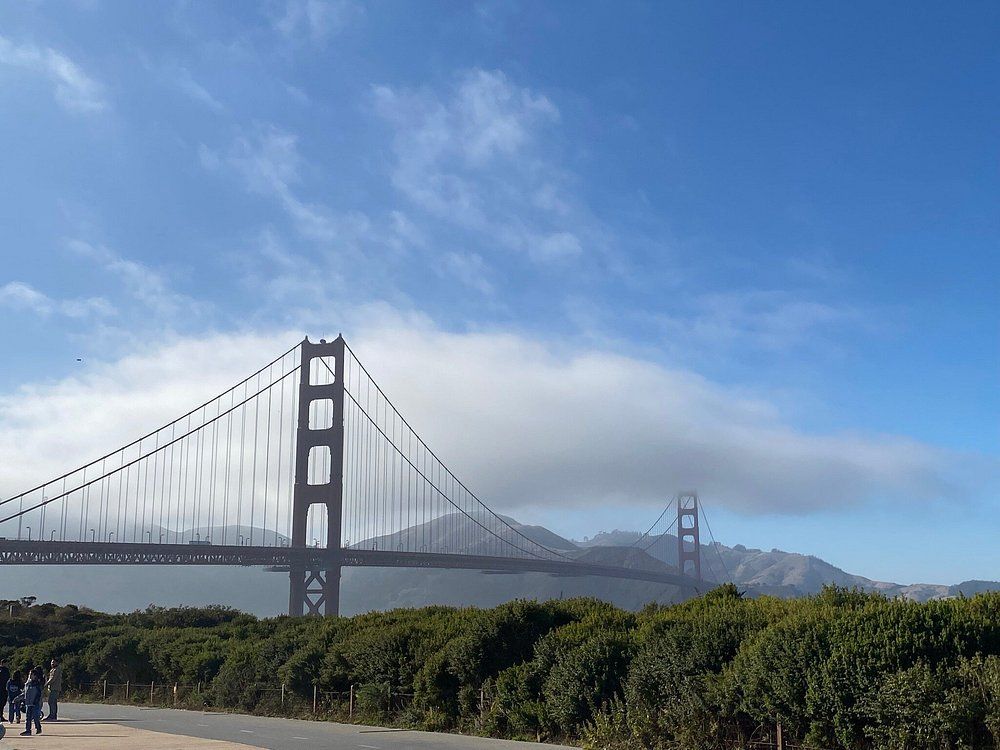
The bridge has its own microclimate—different from downtown. Strangely, summer (June-August) is often chilly and foggy, especially in the afternoons.
The famous fog (locals call it “Karl”) is thickest from May through September. Mornings start misty, but the fog usually burns off by midday. Then, just when you think it’s clear, the fog can roll back in from the ocean around 3 or 4pm.
Winter and early spring (December-April) can surprise you with crisp, sunny days, though rain isn’t rare.
Temperature range:
- Summer: 55-65°F (13-18°C)
- Winter: 45-60°F (7-16°C)
Tip: Always bring layers. The wind on the bridge can make it feel 10-15 degrees cooler than downtown.
Tolls and Fees
Only southbound traffic (heading into San Francisco) pays a toll. As of 2025, it’s $9.40 for regular cars without a FasTrak. No physical booths—everything’s electronic:
- FasTrak transponders (locals love these)
- License plate recognition (pay online within 48 hours)
- One-time payments at www.goldengate.org
Walking or biking? Totally free. The east sidewalk (bay side) is open to pedestrians during daylight, and cyclists get their own paths.
Parking at the vista points runs $3-$5 per hour, depending on the lot. If you want to skip parking hassles, use public transit or a rideshare.
Getting to the Golden Gate Bridge
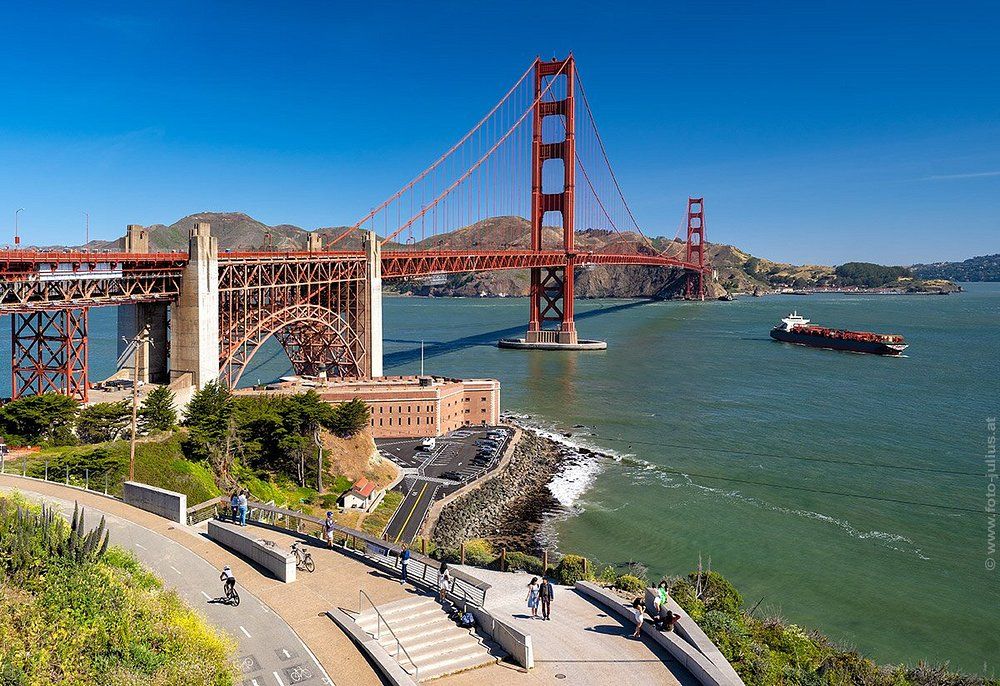
You’ve got options: car, public transit, bike, or on foot. Pick what fits your plans and energy levels.
By Car and Parking
Driving is straightforward via Highway 101. From San Francisco, go north and follow the signs. From Marin, just head south.
Parking fills up fast, especially on weekends and holidays. Main lots:
- Southeast Visitor Lot: San Francisco side
- Northeast Visitor Lot: Also San Francisco side
- Vista Point: Marin side, right after the bridge
Fees range from $7-$9 per hour. Go early or on weekdays for a shot at a spot. If the lots are packed, you might find street parking nearby, but read the signs—restrictions are common.
Public Transit Options
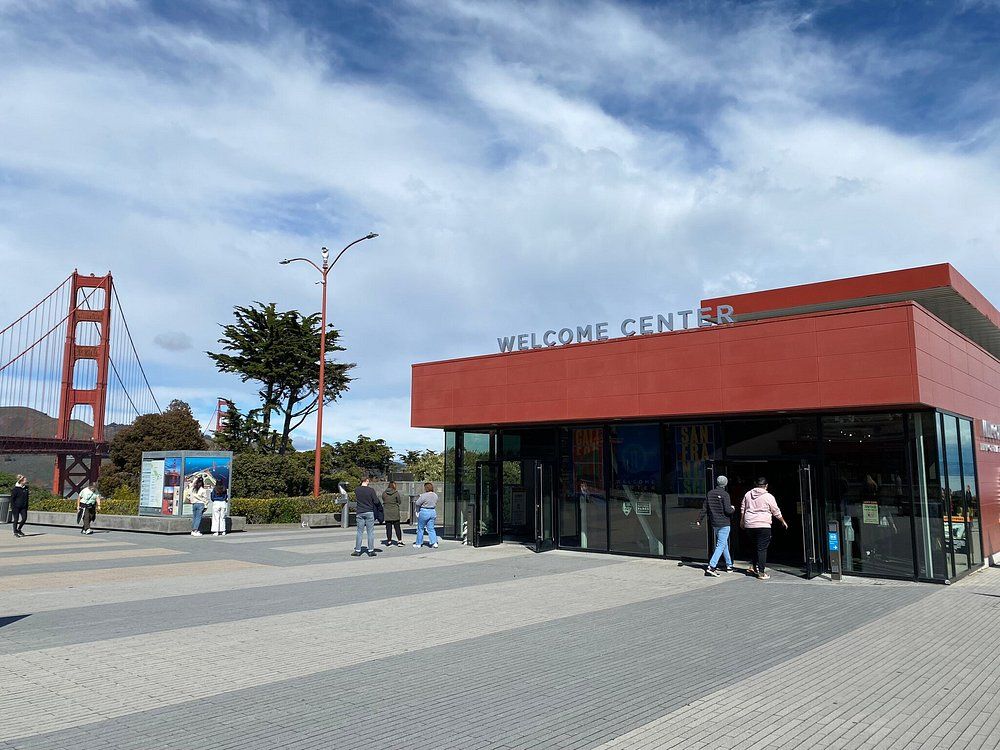
Public transit is a solid way to dodge parking headaches.
Golden Gate Transit buses (routes 130, 70, 92, 93, 101) stop at or near the bridge. From downtown SF, hop on any southbound GGT bus to the Toll Plaza stop, then use the underpass to reach the bridge.
Hop-on Hop-off tour buses include the bridge as a stop, and you’ll get some bridge trivia along the way.
Rideshare (Uber, Lyft, etc.) can drop you at the visitor areas. Handy if you’ve got a group or limited mobility.
The PresidiGo Shuttle runs between the Presidio and downtown, stopping near the visitor area too.
Biking and Walking Routes
Biking to the bridge is a blast and the views are unbeatable.
From San Francisco: Take the bike path through Crissy Field and the Presidio—right along the water, with plenty of photo ops. Bike rentals are everywhere near Fisherman’s Wharf.
From Marin: The route through Sausalito and Fort Baker gives you killer views from the north.
Walking works too. From the Presidio, just follow the Coastal Trail signs—it’s about 30 minutes from the Visitor Center. From Crissy Field, figure on a 25-minute, flat stroll.
Seriously, bring layers. The bridge is almost always windier and colder than you expect, even when the city’s sunny.
Exploring the Golden Gate Bridge
There’s no single “right” way to experience the bridge. Walk, bike, or join a tour—each gives you a different perspective on this amazing structure.
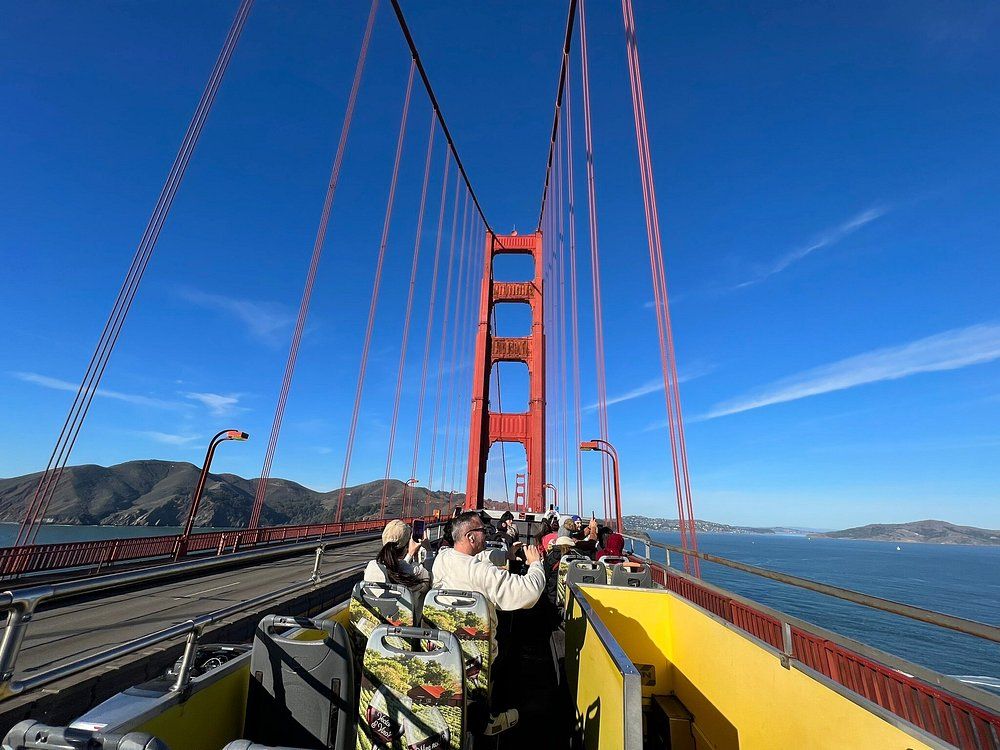
Walking Across the Bridge
Walking the Golden Gate lets you get up close and move at your own pace. The pedestrian walkway runs along the east side, facing the bay and city. It’s 1.7 miles each way—plan for 35-45 minutes one way, more if you stop for photos (and you will).
Views include Alcatraz, Angel Island, and the city skyline. On a clear day, you might spot Point Reyes. Foggy days? Totally different vibe, but still magical.
Layer up—the wind can be biting, and it’s always chillier than downtown. Weekday mornings are the quietest for walking.
Biking Across the Bridge
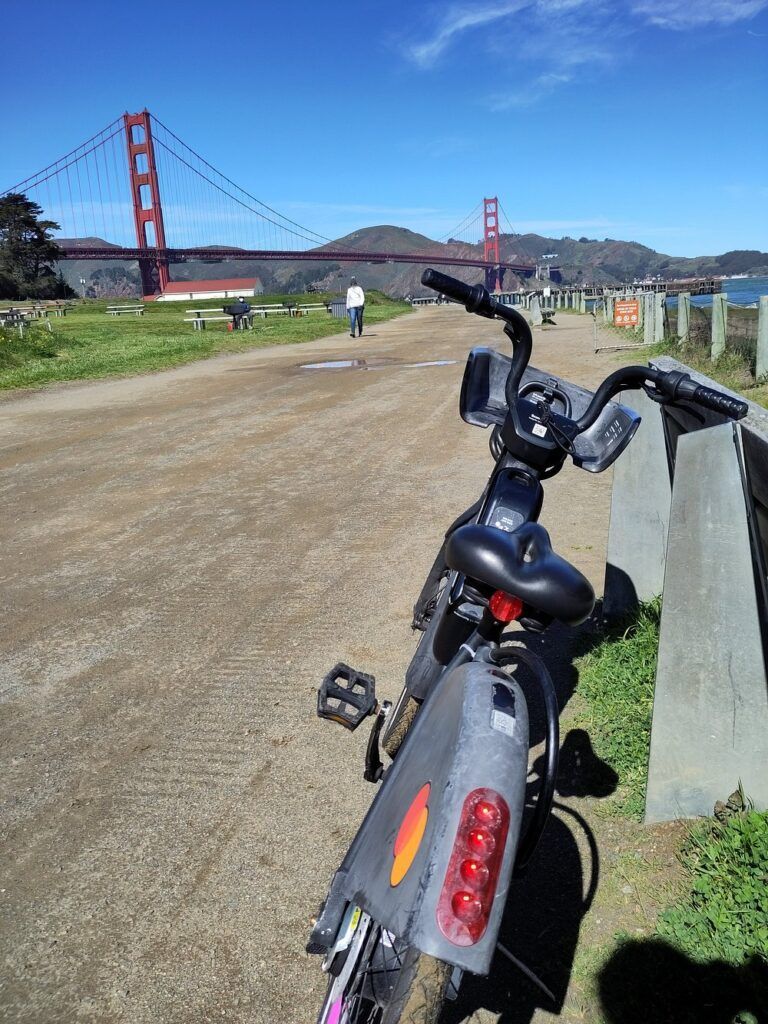
Biking is faster, but you still get those killer views. Bikes use the east sidewalk on weekdays (daylight hours) and the west sidewalk on weekends.
Plenty of rental shops near Fisherman’s Wharf offer bikes for all ages and skill levels. Lots of people bike to Sausalito and then catch the ferry back—makes for a fun day.
Find the perfect hotel or vacation rental. Instant booking, no fees!
View Top Stays
The ride takes about 10-15 minutes each way if you keep moving, but you’ll want to stop for photos. There are designated photo stops along the way.
If you’re with kids, many rental shops have tandems or child seats available.
Golden Gate Bridge Walking Path
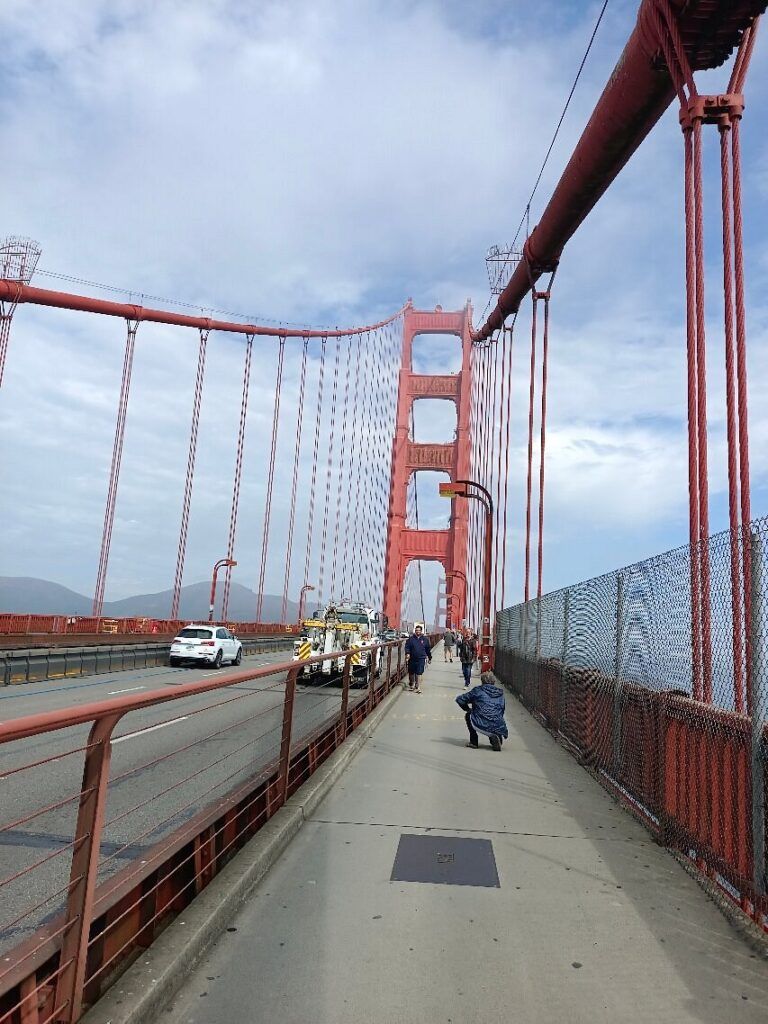
The walking path has several great viewpoints for snapping pics. Start at the Welcome Center (San Francisco side) or from Marin Headlands parking lots.
Safety barriers keep you away from traffic, so families can relax a bit. Info placards along the way share the bridge’s backstory and construction tidbits.
Summers and weekends get crowded. If you want peace and space, go early or on a weekday.
Try starting from the Marin side for different city views. Water fountains are at both ends, but not on the bridge itself.
Top Attractions and Nearby Activities
The area around the Golden Gate Bridge has more than just the bridge itself. There are viewpoints, parks, and even beaches that show off the bridge from new angles.
Golden Gate Bridge Vista Points
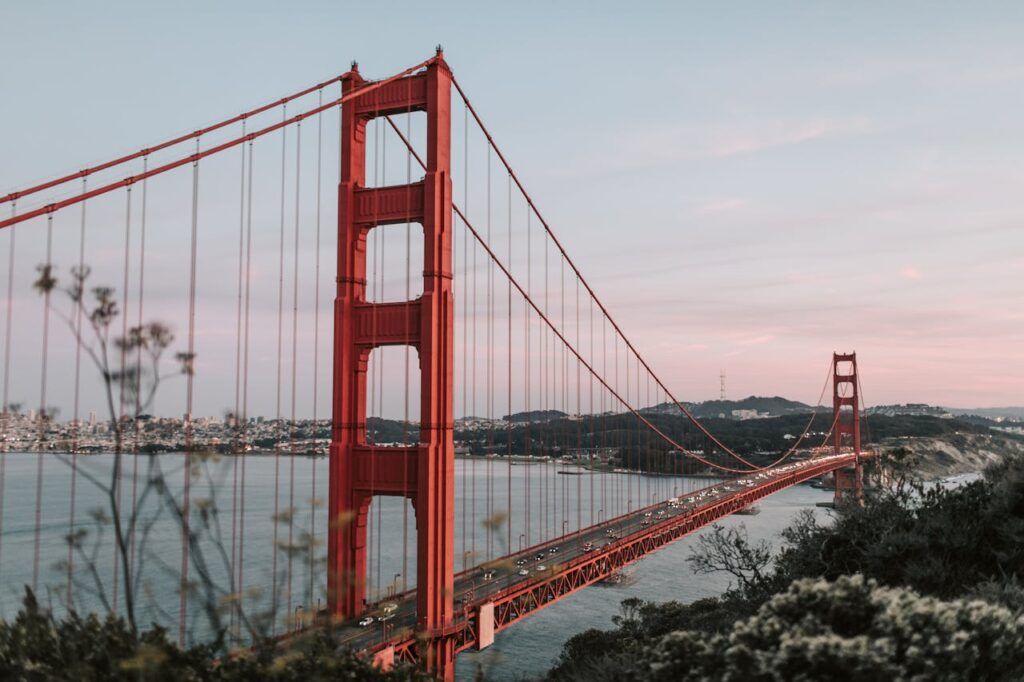
The Bridge Plaza (southeast end) features exhibits about the bridge’s history and construction. It’s a classic spot for photos, with the towers rising behind you. The gift shop has some fun, quirky bridge souvenirs.
Battery Spencer (Marin side) gives you an eye-level look at the north tower. It’s quieter than most viewpoints, especially if you go on a weekday morning.
Baker Beach (when it’s clear) offers a different angle, with the Marin Headlands in the background. It’s less touristy than the main bridge areas.
Fort Point sits right beneath the southern end. This Civil War fort has historical exhibits and some wild views looking up at the bridge’s underbelly.
Marin Headlands and Surroundings
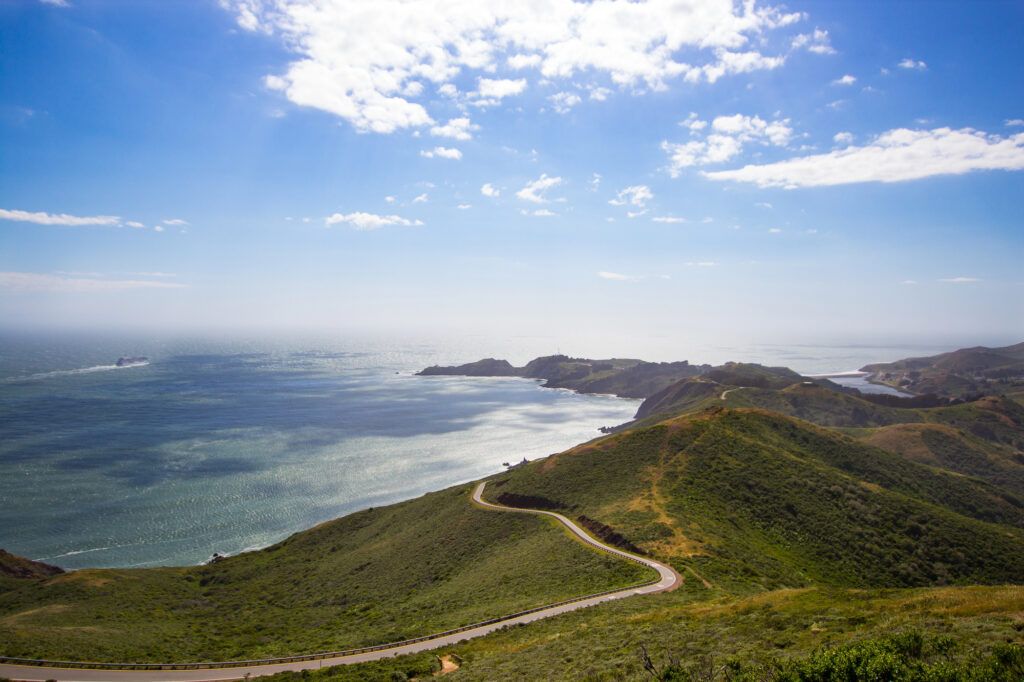
Just north of the bridge, the Marin Headlands are packed with hiking trails and panoramic views. The Coastal Trail is a moderate hike with killer vistas of the bridge, city, and ocean.
Sausalito, a waterfront town, is just 10 minutes from the bridge. There are art galleries, shops, and waterfront restaurants. The boardwalk has great views back toward SF.
Rodeo Beach, with its wild pebbles, is worth a stop for dramatic cliffs and fewer crowds. Locals love it for surfing.
Point Bonita Lighthouse requires a short tunnel hike to reach. It’s only open Thursday-Monday, but the western views of the bridge and Pacific are worth the effort—and most tourists never make it out there.
Read our guide to the Marin Headlands.
Cruises and Ferries Near the Bridge

The Blue & Gold Fleet runs one-hour bay cruises that glide right under the bridge. You’ll get great photo ops and some lively historical commentary about the bridge and the bay—honestly, it’s hard not to snap a dozen pictures.
If you’re craving a bit more thrill, those high-speed RIB boat tours zip you close to the bridge’s foundations. These smaller boats can sneak into spots the bigger ones just can’t manage.
The Sausalito Ferry is a classic: a 30-minute ride from San Francisco with sweeping bridge and city skyline views. Bring your bike if you like—you can cycle back over the bridge for a different perspective.
Alcatraz cruises pass near the bridge on the way to the notorious prison island. You get two big sights in one trip, but fair warning: tickets sell out weeks ahead in the summer.
Best Golden Gate Bridge Views and Photo Spots
The Golden Gate Bridge is a photographer’s dream, with viewpoints all over the place. Each spot gives you a fresh angle on the iconic red-orange structure—sometimes it’s glowing over the bay, other times it’s peeking out of the fog or set against the rugged coast.
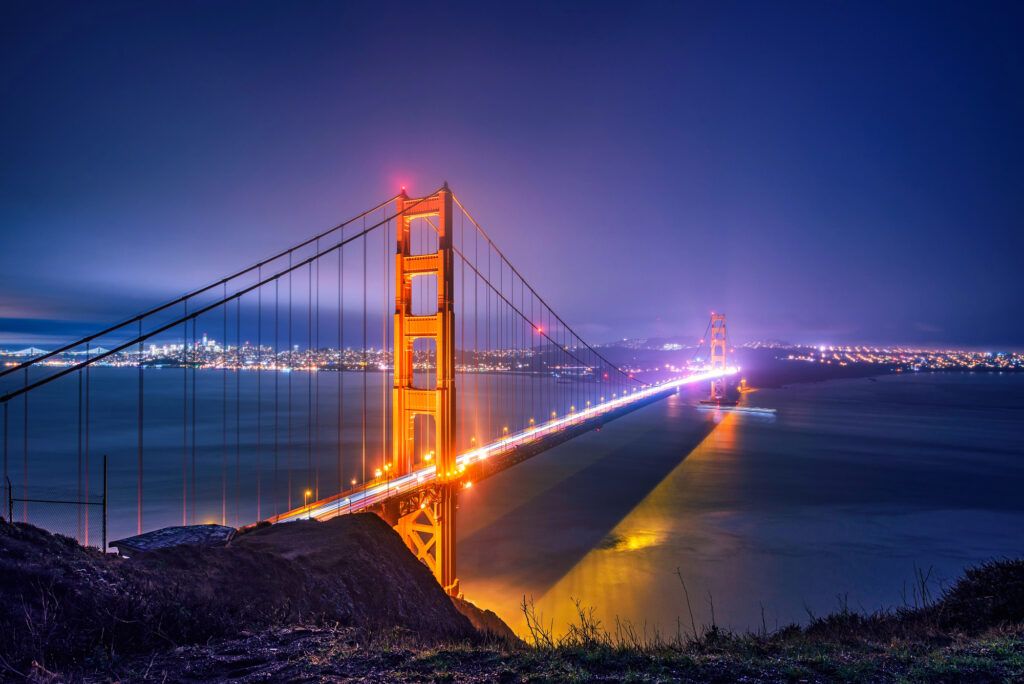
San Francisco Skyline Views
If you want that postcard shot of the bridge and San Francisco’s skyline, Battery Spencer in the Marin Headlands is the place. This old military site sits high up, giving you a straight-on view of the bridge with the city spread out behind it.
Sunset is prime time here—the bridge just lights up against the city. Parking gets tight, so come early, especially on weekends. And trust me, bring a jacket; the wind doesn’t care if it’s sunny.
Fort Point is another favorite. It’s tucked right under the southern end of the bridge, and you can look almost straight up at the massive steelwork with the city shimmering in the distance.
Views from Baker Beach and Aquatic Park
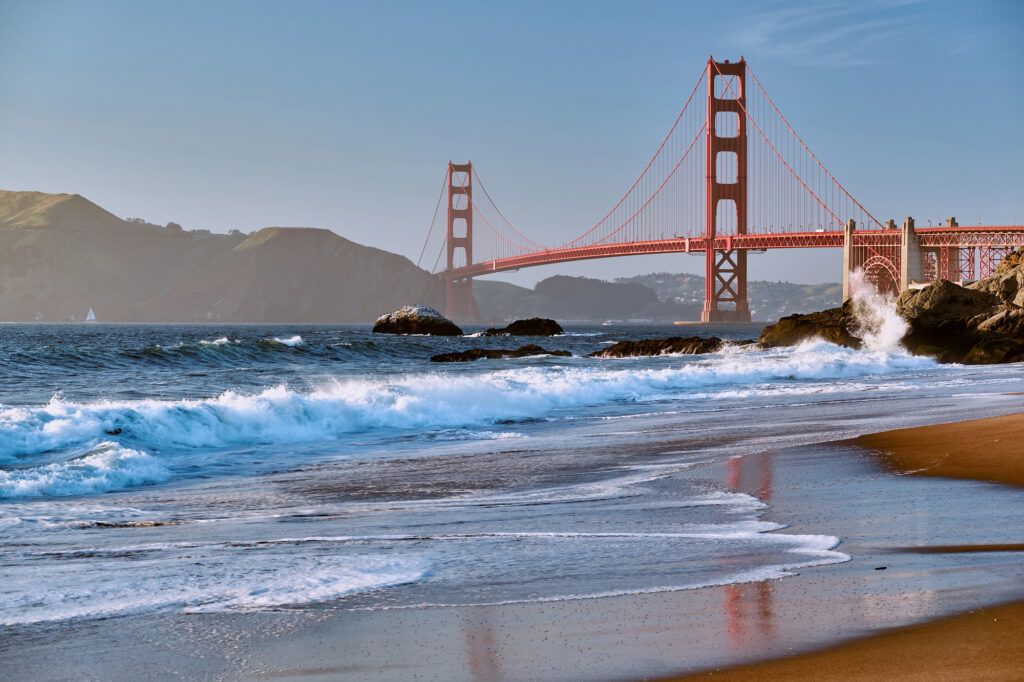
Baker Beach might be one of the most photographed spots in the city. From this stretch of sand, you can see the whole bridge with the Marin Headlands behind. Weekday mornings are quieter—perfect for setting up your tripod without a crowd.
For something a little wilder, Marshall’s Beach is a great pick. Hike down the Battery to Bluffs trail, and you’ll find a secluded view with the bridge soaring above the rocky shore.
Aquatic Park is a different vibe altogether. From this protected cove, you can frame the bridge with the bay and watch boats drift underneath. It’s got good facilities and is wheelchair accessible, too.
Views from Conzelman Road
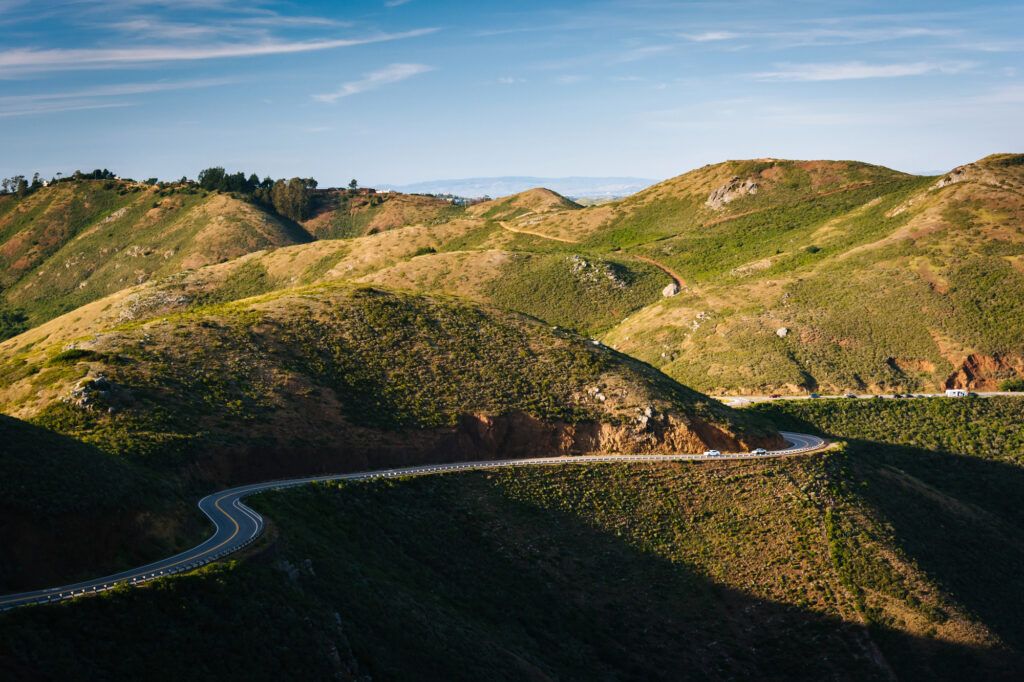
Conzelman Road in the Marin Headlands is packed with jaw-dropping viewpoints. Start at Battery Spencer for the classic shot, then wind your way up the hill.
At the top, Hawk Hill gives you a sweeping panorama—bridge, city, bay, and on a clear day, you might even spot Point Reyes and the East Bay.
Different pullouts along the road offer their own twists:
- Lower: Up-close bridge shots with the city behind
- Middle: Eye-level views with the ocean and bridge together
- Upper: Big, almost aerial-feeling perspectives
Kirby Cove, reachable by a trail from Conzelman, rewards you with a quiet beach and a frame-worthy view of the bridge through cypress trees. It takes a bit of effort, but photographers swear by it.
History and Architecture of the Golden Gate Bridge
The Golden Gate Bridge stands out as one of the boldest engineering feats of the last century. Its story goes back to the early 1900s, and the bridge’s unique design has made it a symbol recognized around the world.
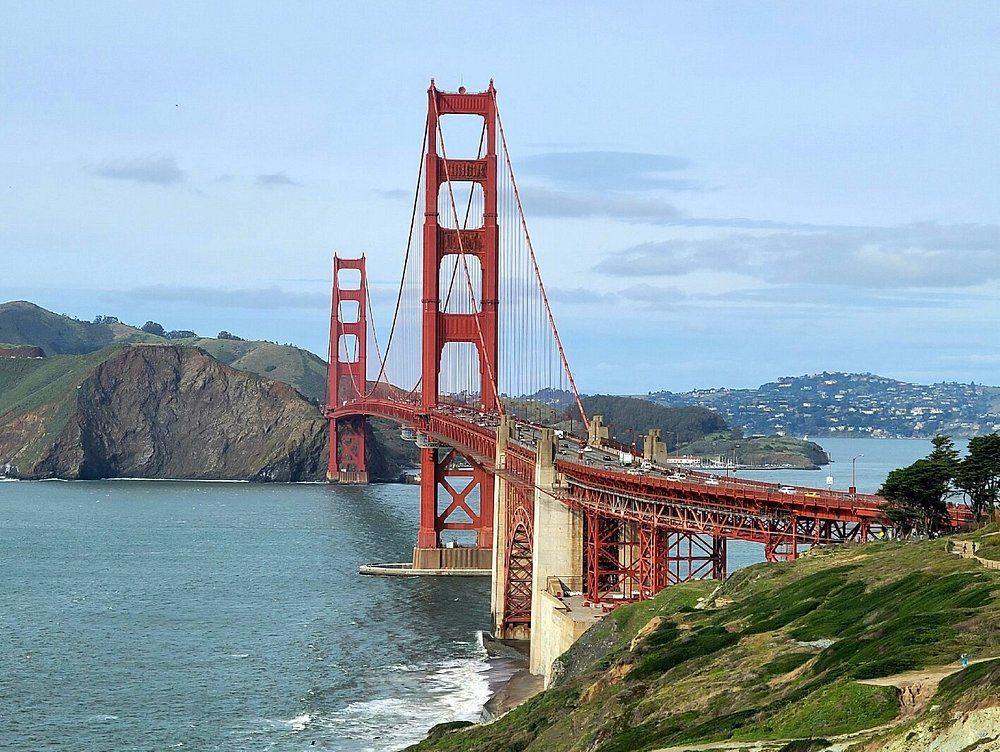
Construction and Design
Crews built the Golden Gate Bridge between 1933 and 1937, spanning the Golden Gate Strait where the bay meets the Pacific. Joseph Strauss led the project, but he had help from a team of engineers and architects who refined the final design. They faced some wild challenges—strong currents, thick fog, and the constant threat of earthquakes.
Back in 1937, the bridge set records as the longest and tallest suspension bridge in the world. It stretches 1.7 miles, with a main span of 4,200 feet.
The two towers soar 746 feet above the water. The bridge’s Art Deco touches and clean lines really capture the style of that era.
Luxury stays to cozy cottages await, all with instant booking. Find the best deals!
Browse Marin Stays
Historical Significance
Before the bridge, ferries were the only way across the Golden Gate Strait. The bridge idea started floating around in the early 1900s, though most people thought it couldn’t be done. Michael O’Shaughnessy, the city engineer, pushed the concept forward until it finally gained traction.
Construction started during the Great Depression and brought desperately needed jobs. Despite the dangers, the crew finished early and under budget—a rarity for projects this size.
The bridge opened to pedestrians on May 27, 1937, and to vehicles the next day. It instantly changed transportation across the region. Thanks to its flexible design, the bridge has weathered several earthquakes, including the big one in 1989.
In 1994, officials named the Golden Gate Bridge one of the Wonders of the Modern World.
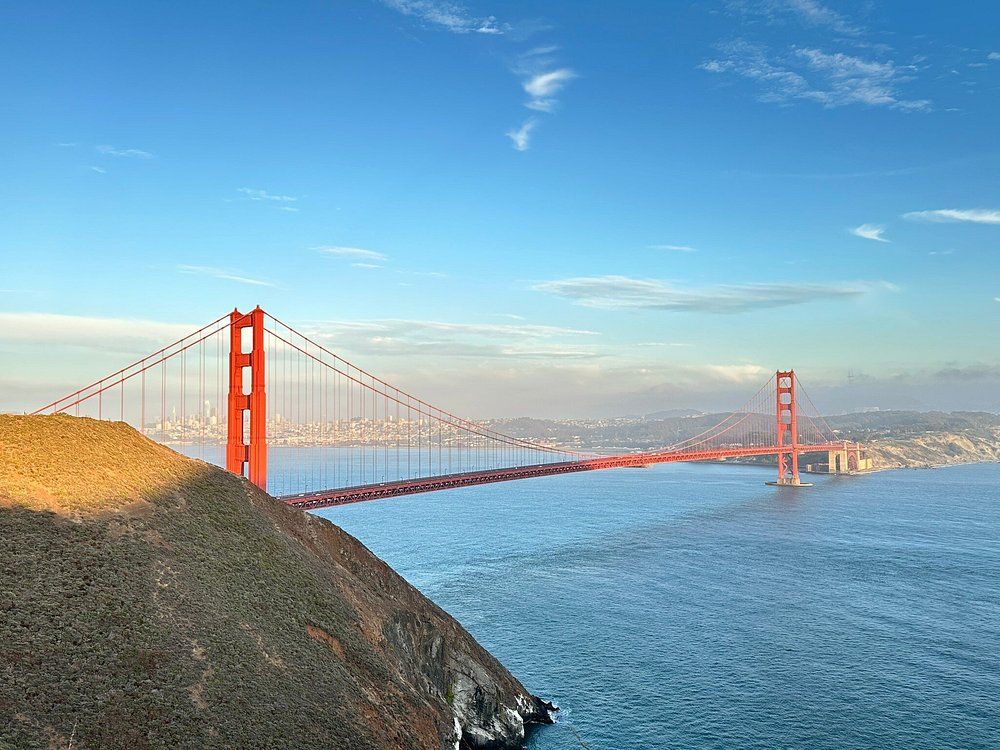
International Orange Paint
The bridge’s color—“International Orange”—wasn’t the original plan. The Navy wanted black with yellow stripes for visibility, while others suggested gray so it would blend in.
Irving Morrow, the consulting architect, picked the bold orange-red we know today. He noticed the primer on the steel actually worked with the landscape, bridging the warm earth and cool sea tones.
International Orange stands out in fog and still looks good with the scenery. Plus, it helps protect the bridge from rust in the salty air.
Keeping that color fresh is a never-ending job. Paint crews work year-round, touching up sections and rotating through the bridge to keep it looking sharp against the weather.
Practical Tips for Your Visit
A little planning goes a long way when you’re visiting the Golden Gate Bridge. Here are some tips to dodge traffic, keep the kids happy, and make sure everyone can enjoy the views—mobility needs included.
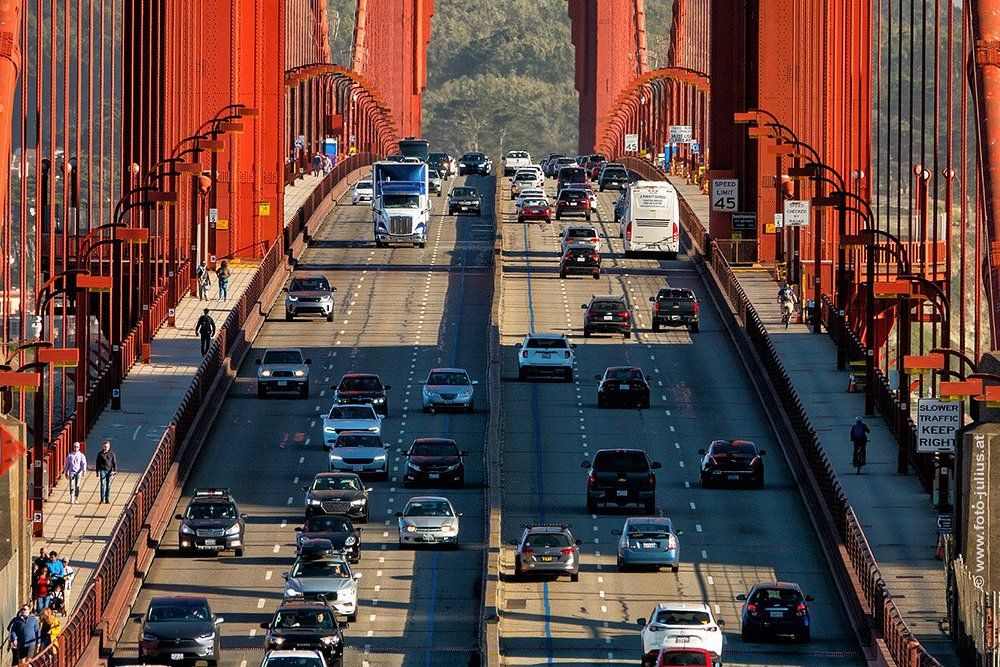
Navigating Traffic and Delays
Traffic can get rough on the bridge, especially on weekends and holidays. Try to arrive before 9 AM or after 4 PM on weekdays to skip the worst of it.
Parking is tight at both the north and south vista points. The main lot on the San Francisco side fills up fast, often by mid-morning. If you can, take a rideshare or hop on public transit.
Several Muni buses (28 and 30) head to the bridge from downtown, and Golden Gate Transit covers the North Bay.
Check real-time traffic on the bridge’s official site or apps like Waze before you go. It’s worth a quick look to avoid sitting in a jam.
Family-Friendly Experiences
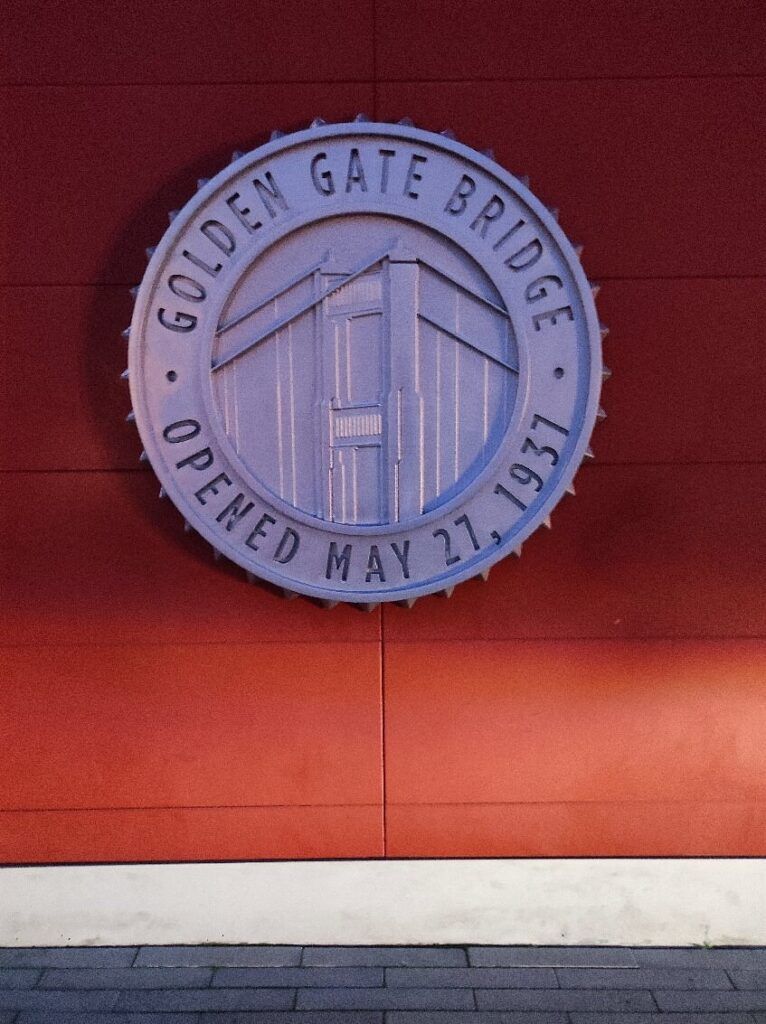
Bridge Plaza is a hit with kids—there are interactive exhibits about the bridge’s history and engineering. The scale models and wind demos are surprisingly fun, even for adults.
Bring binoculars for spotting dolphins, seals, and sometimes even whales from the walkway. It’s a thrill for little ones (and let’s be honest, for grownups too).
Food options are slim; Equator Coffee at the Round House Cafe has snacks and drinks, but it gets crowded. Pack your own if you want to picnic.
The Presidio nearby has picnic spots and playgrounds for when the kids need to burn off steam. Battery East and Crissy Field are both good for a post-bridge runaround.
Accessibility Information
The east side pedestrian walkway is wheelchair accessible with smooth pavement. The west side, which is for bikes, isn’t accessible for wheelchairs.
Both vista points have accessible parking, but those spots fill up quickly. The south vista point is best for accessible viewing and restrooms.
You can grab free accessibility maps at the Bridge Plaza welcome center—they show ramps, rest stops, and path gradients.
Most tours can accommodate mobility needs with advance notice. It’s best to call ahead and talk through any specific requirements.
Fog and wind can make things tricky, so check the forecast and wear layers. The weather changes fast out there.
Where to Stay Near the Golden Gate Bridge
You’ve got some pretty fantastic options for waking up to Golden Gate views—everything from luxury lodges to charming inns.
Presidio and Marina District
The Presidio neighborhood sits right at the bridge’s doorstep. The Lodge at the Presidio offers you those postcard-perfect bridge views from a historic military post turned boutique hotel. It’s peaceful, it’s green, and you’re literally minutes from stepping onto the bridge.
Just east is the Marina District, where cozy spots like the Surf Motel and La Luna Inn give you comfortable rooms without emptying your wallet. You’ll be within walking distance of Marina Green—a perfect spot for your morning coffee with a bridge backdrop.
Click here to read our guide on hotels near the Golden Gate Bridge.
Pacific Heights
Up in Pacific Heights, the Hotel Drisco sits perched on a hill with some seriously impressive panoramas. This elegant spot has a bit of that old-world San Francisco charm—think complimentary wine receptions and breakfast buffets that’ll make you want to linger.
It’s quieter up here, more residential, but you’re still just a short ride from the bridge and surrounded by those classic Victorian mansions San Francisco is famous for.
Click here to read our guide on hotels near the Golden Gate Bridge.
Marin Headlands
Want to wake up literally at the foot of the bridge? Cross over to the Marin side and check out Cavallo Point. This former military base now houses what might be the most dramatic Golden Gate views of any hotel around. The morning fog rolling over the bridge from your balcony? Honestly magical.
Some rooms are in restored historic buildings, others in more modern spaces—but the real star is stepping outside and having those incredible bridge views right there. It’s not the cheapest option, but for a special stay, it’s pretty unforgettable.
For the best view when it’s foggy (which, let’s be real, is often), locals recommend Cavallo Point as your best bet—the perspective from the Marin side often puts you above the fog line.
Whichever spot you choose, booking ahead is smart. With over 470 hotels in the area, you’ve got options—but the ones with those million-dollar bridge views? They fill up fast.
Click here to read our guide on hotels near the Golden Gate Bridge.
Exploring San Francisco and Neighboring Attractions
While you’re at the Golden Gate Bridge, it’s worth exploring the rest of San Francisco. The city’s packed with iconic spots, each with its own vibe and quirks.
Fisherman’s Wharf and Lombard Street
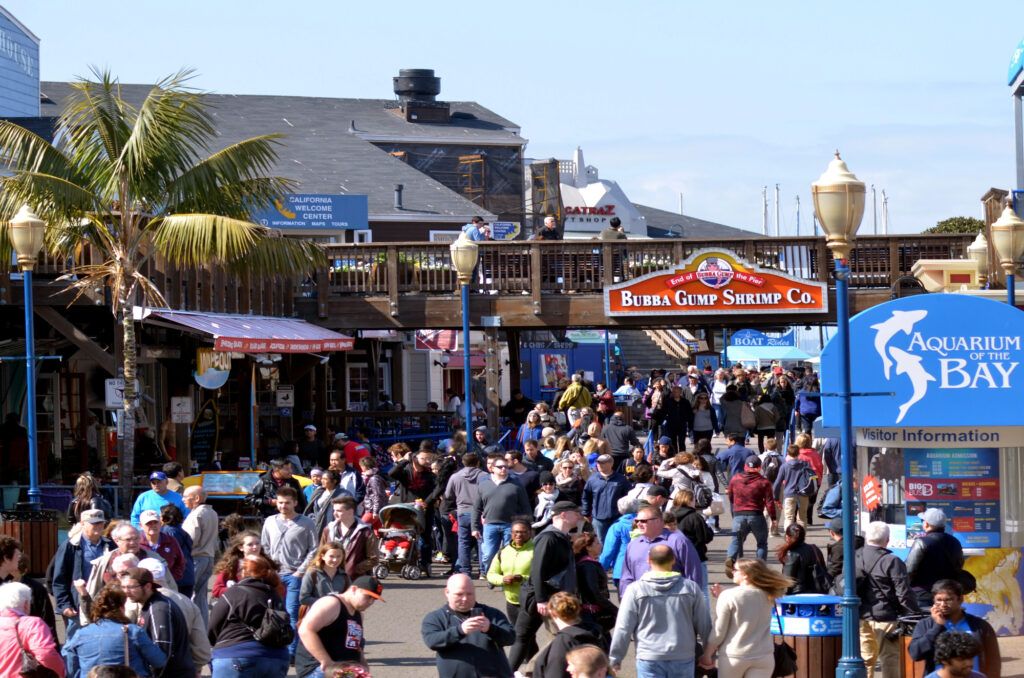
Fisherman’s Wharf is about three miles from the bridge and makes a great next stop. It’s busy—think seafood shacks, souvenir stands, street performers, and the famous Pier 39, where sea lions bark and sprawl on the docks.
The Aquarium of the Bay lets you get nose-to-nose with local marine life in see-through tunnels.
From the Wharf, wander to Lombard Street, “the crookedest street in the world.” This steep block twists through eight tight turns, lined with bright gardens and classic Victorian homes.
For the full effect, walk up the east stairs and watch the cars zigzag from above. It’s a bit touristy, but honestly, it’s fun.
Bay Bridge and Surroundings

The Bay Bridge links San Francisco to Oakland and the East Bay. It might not have the same fame as the Golden Gate, but this double-decker bridge has its own charm—especially after dark, when 25,000 LED lights put on a pretty spectacular show.
Wander over to the Embarcadero near the bridge’s western end and check out the Ferry Building Marketplace. This historic spot is now packed with local food stalls, artisan treats, and a lively farmers’ market that pops up weekly.
If you’re up for a bit of discovery, the Exploratorium is close by. It’s an interactive science museum where you can get your hands on exhibits that actually make tricky ideas feel approachable—and honestly, pretty entertaining.
Want a different angle on the bridges? Hop on a quick ferry to Treasure Island, the man-made patch of land halfway across the Bay Bridge. From there, the city skyline stretches out in front of you, and at sunset, it’s honestly hard not to just stand there and stare.
Find available hotels and vacation homes instantly. No fees, best rates guaranteed!
Check Availability Now



